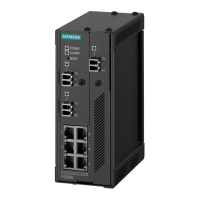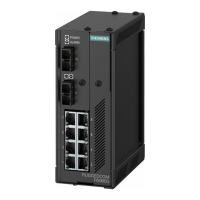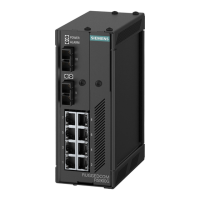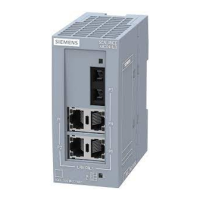RUGGEDCOM NETCONF
Reference Guide
Chapter 7
Examples
Enabling OSPF on a Layer 3 Device 107
6. Unlock the candidate configuration:
<rpc xmlns="urn:ietf:params:xml:ns:netconf:base:1.0" message-id="235">
<unlock>
<target>
<candidate/>
</target>
</unlock>
</rpc>]]>]]>
7. Unlock the running configuration:
<rpc xmlns="urn:ietf:params:xml:ns:netconf:base:1.0" message-id="236">
<unlock>
<target>
<running/>
</target>
</unlock>
</rpc>]]>]]>
Section7.30
Enabling OSPF on a Layer 3 Device
In this example, multiple <rpc> requests enable OSPF in the candidate configuration and then commit the
changes.
The following is the recommended procedure for making configuration changes on a device.
1. Lock the running configuration:
<rpc xmlns="urn:ietf:params:xml:ns:netconf:base:1.0" message-id="230">
<lock>
<target>
<running/>
</target>
</lock>
</rpc>]]>]]>
2. Lock the candidate configuration:
<rpc xmlns="urn:ietf:params:xml:ns:netconf:base:1.0" message-id="231">
<lock>
<target>
<candidate/>
</target>
</lock>
</rpc>]]>]]>
3. Discard uncommitted changes:
<rpc xmlns="urn:ietf:params:xml:ns:netconf:base:1.0" message-id="232">
<discard-changes/>
</rpc>]]>]]>
4. Enable OSPF:
<rpc message-id="233" xmlns="urn:ietf:params:xml:ns:netconf:base:1.0">
<edit-config>
<target>
<candidate/>
</target>
<config>
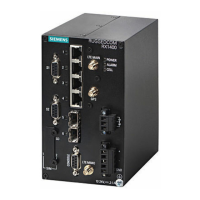
